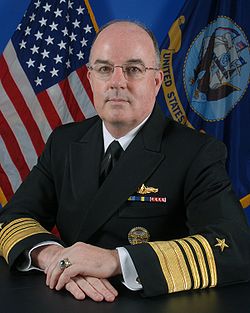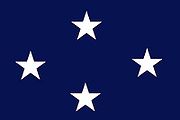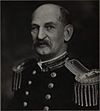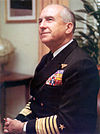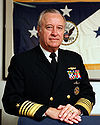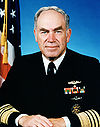- Commander, U.S. Fleet Forces Command
-
Commander, U.S. Fleet Forces Command
Incumbent:
ADM John C. Harvey, Jr.
since: July 24, 2009First Robley D. Evans Formation 1905 Website Official Website
Commander, U.S. Fleet Forces Command (COMFLTFORCOM), is the title of the United States Navy officer who serves as the commanding officer of the United States Fleet Forces Command. The U.S. Fleet Forces Command was originally established in 1905 as the U.S. Atlantic Fleet and as a two-star rear admiral's billet,[1] the position has been held by a four-star admiral since March 10, 1915.[1] The 40th and current, commander of U.S. Fleet Forces Command is Admiral John C. Harvey, Jr.
Title's history
The first Commander-in-Chief of the Atlantic Fleet was Rear Admiral Robley D. Evans, who assumed command on January 1, 1906 aboard his flagship the battleship USS Maine (BB-10).[1]
The title, Commander-in-Chief, U.S. Atlantic Fleet, was continuously used from 1906 until 1923 and again from 1941 to 2002.[1] In a reorganization of the United States Fleet in 1923, that title was abolished and the title Commander Scouting Force was used.[1] On February 1, 1941, General Order 143 reestablished the title and reorganized the United States Fleet into three separate fleets: the U.S. Atlantic Fleet, the U.S. Pacific Fleet and the U.S. Asiatic Fleet.[1] The order further stated each fleet would be under the command of a four-star admiral.[1] Thus, on February 1, 1941, Rear Admiral Ernest J. King, in his flagship USS Texas (BB-35) at Culebra, Puerto Rico, hauled down his two-star flag and hoisted his four-star flag as Commander-in-Chief, U.S. Atlantic Fleet.[1]
After the end of World War II, the organization of the United States armed forces was reviewed with a view toward reorganization after the turbulent war years.[1] On December 1, 1947, under a reorganization act of the armed forces approved by Congress, the unified combatant command, United States Atlantic Command, was established with headquarters co-located to those of the U.S. Atlantic Fleet.[1] Admiral William H.P. Blandy was given the dual-hatted command of both U.S. Atlantic Fleet and U.S. Atlantic Command thus becoming the Commander-in-Chief, U.S. Atlantic Fleet and the first Commander-in-Chief, U.S. Atlantic Command.[1] The two titles remained linked until another reorganization of the armed forces, via the Goldwater-Nichols Act in 1985, separated the U.S. Atlantic Command from the U.S. Atlantic Fleet.[1]
In the early 1950s, the North Atlantic Treaty Organization (NATO) decided to establish a new major command, Allied Command Atlantic, under the command of a U.S. four-star admiral with headquarters in Norfolk, VA.[1] Since this was primarily a naval command responsible for allied defense of the North Atlantic, the decision was made to co-locate this organization with that of the U.S. Atlantic Command and U.S. Atlantic Fleet, to form a tripple-hatted command.[1] On April 10, 1952, Admiral Lynde D. McCormick, the Commander-in-Chief, U.S. Atlantic Command and U.S. Atlantic Fleet, assumed the additional title as the first Supreme Allied Commander Atlantic.[1] Like the U.S. Atlantic Command, the Allied Command Atlantic remained intact and part of a tripple-hatted command organization until the Goldwater-Nichols Act occurred in 1985.[1] The Goldwater-Nichols Act separated command of the U.S. Atlantic Fleet from the other two commands giving the U.S. Atlantic Fleet its own four-star admiral.[1] Admiral Wesley L. McDonald was the last U.S. Navy admiral to command all three organizations at the same time.[1] He relinquished command of the U.S. Atlantic Fleet to Admiral Carlisle A. H. Trost on October 4, 1985.[1]
However, under the Goldwater-Nichols Act, the admiral filling the post of Commander-in-Chief, U.S. Atlantic Fleet, would also serve as the Deputy Commander-in-Chief, U.S. Atlantic Command.[1] This role for CINCLANTFLT continued until 1986 when the Secretary of Defense approved a separate billet for the Deputy Commander-in-Chief, U.S. Atlantic Command.[1] On September 16, 1986, Admiral Frank B. Kelso II relinquished the Deputy USCINCLANT post to Major General Thomas G. Darling, USAF.[1]
On October 1, 2001, the Chief of Naval Operations designated the CINCLANTFLT to concurrently serve as Commander, U.S. Fleet Forces Command.[1] U.S. Fleet Forces Command became responsible for overall coordination, establishment, and implementation of integrated requirements and policies for manning, equipping, and training Atlantic and Pacific Fleet units during the inter-deployment training cycle.[1]
On October 24, 2002, Secretary of Defense Donald Rumsfeld directed that the title of "Commander-in-Chief" be reserved solely for the President of the United States.[1] In a message to Naval Commanders-in-Chief, the Chief of Naval Operations directed a change of title to that of "Commander."[1] This change affected the U.S. Atlantic Fleet, U.S. Pacific Fleet, and U.S. Naval Forces Europe thus renaming Commander-in-Chief, U.S. Atlantic Fleet to Commander, U.S. Atlantic Fleet.[1]
On May 23, 2006, the Chief of Naval Operations ordered the assimilation of U.S. Atlantic Fleet into U.S. Fleet Forces Command and that the dual-hatted position be integrated to its current title of Commander, U.S. Fleet Forces Command.[1]
On October 31, 2006, a ceremony was held to officially mark the transition of the U.S. Atlantic Fleet and U.S. Fleet Forces Command to just U.S. Fleet Forces Command.[1] Three of the 37 previous admirals who held the top post in the Atlantic fleet attended the ceremony, which was held aboard the aircraft carrier USS Theodore Roosevelt (CVN-71).[1]
Appointment
The Commander, U.S. Fleet Forces Command is nominated by the President for appointment from any eligible officers holding the rank of rear admiral (lower half) or above,[2] whom also meets the requirements for the position, under the advice and/or recommendation of the Secretary of the Navy, the Chief of Naval Operations, and if applicable the Chairman of the Joint Chiefs of Staff.[2] The nominee must be confirmed via majority vote by the Senate.[2]
List of commanders
Commander-in-Chief, U.S. Atlantic Fleet
# Name Rank Picture Start of tenure End of tenure 1 Robley D. Evans 
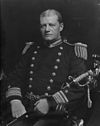
March 1905 May 1908 2 Charles S. Sperry 
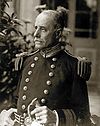
May 1908 March 1909 3 Seaton Schroeder 
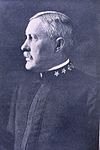
March 1909 June 1911 4 Hugo W. Osterhaus 
June 1911 January 1913 5 Charles J. Badger 
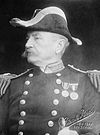
January 1913 September 1914 6 Frank F. Fletcher[3] 

September 1914 June 1916 7 Henry T. Mayo 
June 1916 June 1919 8 Henry B. Wilson 
June 1919 June 1921 9 Hilary P. Jones 
June 1921 December 1922 10 Ernest J. King[4] 
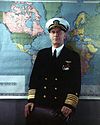
February 1, 1941 December 30, 1941 11 Royal E. Ingersoll[5] 
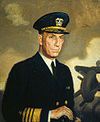
December 30, 1941 November 15, 1944 12 Jonas H. Ingram 
November 15, 1944 September 26, 1946 13 Marc A. Mitscher 
September 26, 1946 February 3, 1947 Commander-in-Chief, U.S. Atlantic Fleet and
Commander-in-Chief, U.S. Atlantic Command# Name Rank Picture Start of tenure End of tenure 14 William H. P. Blandy 
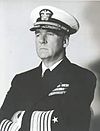
February 3, 1947 February 1, 1950 15 William M. Fechteler 
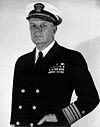
February 1, 1950 August 15, 1951 Commander-in-Chief, U.S. Atlantic Fleet,
Commander-in-Chief, U.S. Atlantic Command and
Supreme Allied Commander Atlantic# Name Rank Picture Start of tenure End of tenure 16 Lynde D. McCormick 
August 15, 1951 April 12, 1954 17 Jerauld Wright 
April 12, 1954 February 28, 1960 18 Robert L. Dennison 
February 28, 1960 April 30, 1963 19 Harold P. Smith 
April 30, 1963 April 30, 1965 20 Thomas H. Moorer[6] 
April 30, 1965 June 17, 1967 21 Ephraim P. Holmes 
June 17, 1967 September 30, 1970 22 Charles K. Duncan 
September 30, 1970 October 31, 1972 23 Ralph W. Cousins 
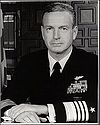
October 31, 1972 May 30, 1975 24 Isaac C. Kidd, Jr. 
May 30, 1975 September 30, 1978 25 Harry D. Train II 
September 30, 1978 September 30, 1982 26 Wesley L. McDonald 
September 30, 1982 October 4, 1985 Commander-in-Chief, U.S. Atlantic Fleet and
Deputy Commander-in-Chief, U.S. Atlantic Command# Name Rank Picture Start of tenure End of tenure 27 Carlisle A. H. Trost[7] 
October 4, 1985 June 30, 1986 28 Frank B. Kelso II[8] 
June 30, 1986 September 16, 1986 Commander-in-Chief, U.S. Atlantic Fleet
# Name Rank Picture Start of tenure End of tenure 28 Frank B. Kelso II[8] 
September 16, 1986 November 4, 1988 29 Powell F. Carter, Jr. 
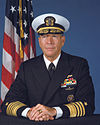
November 4, 1988 January 31, 1991 30 Paul David Miller 
January 31, 1991 July 13, 1992 31 Henry H. Mauz, Jr. 
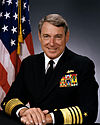
July 13, 1992 October 5, 1994 32 William J. Flanagan, Jr. 
October 5, 1994 December 20, 1996 33 J. Paul Reason[9] 
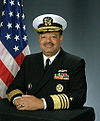
December 20, 1996 September 17, 1999 34 Vern Clark[10] 
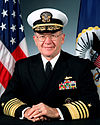
September 17, 1999 June 23, 2000 35 Robert J. Natter 
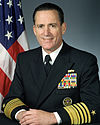
June 23, 2000 October 1, 2002 Commander-in-Chief, U.S. Atlantic Fleet and
Commander, U.S. Fleet Forces Command# Name Rank Picture Start of tenure End of tenure 35 Robert J. Natter 

October 1, 2002 October 24, 2002 Commander, U.S. Atlantic Fleet and
Commander, U.S. Fleet Forces Command# Name Rank Picture Start of tenure End of tenure 35 Robert J. Natter 

October 24, 2002 October 3, 2003 36 William J. Fallon[11] 
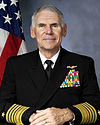
October 3, 2003 February 18, 2005 37 John B. Nathman 
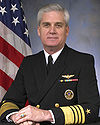
February 18, 2005 May 22, 2006 Commander, U.S. Fleet Forces Command
# Name Rank Picture Start of tenure End of tenure 37 John B. Nathman 

May 22, 2006 May 16, 2007 38 Gary Roughead[12] 
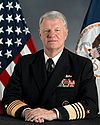
May 17, 2007 September 28, 2007 39 Jonathan W. Greenert[13] 
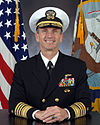
September 29, 2007 July 23, 2009 40 John C. Harvey, Jr. 
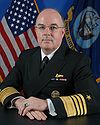
July 24, 2009 Incumbent See also
References
- ^ a b c d e f g h i j k l m n o p q r s t u v w x y z aa ab ac ad "A Brief History Of The U.S. Fleet Forces Command". United States Navy. http://www.public.navy.mil/usff/Pages/history.aspx. Retrieved 2009-10-02.
- ^ a b c [1] 10 USC 601. Positions of importance and responsibility: generals and lieutenant generals; admirals and vice admirals.
- ^ Fletcher originally assumed office as a rear admiral then was promoted to admiral in 1915 bypassing the rank of vice admiral.
- ^ King was promoted to Fleet Admiral on December 17, 1944. He later served as Commander-in-Chief, United States Fleet and as the 9th Chief of Naval Operations.
- ^ Ingersoll later served as Commander, Western Sea Frontier.
- ^ Moorer later served as the 18th Chief of Naval Operations and as the 7th Chairman of the Joint Chiefs of Staff.
- ^ Troust later served as the 23rd Chief of Naval Operations.
- ^ a b Kelso later served as the 24th Chief of Naval Operations.
- ^ Reason was the first African-American to become a four-star admiral.
- ^ Clark later served as the 27th Chief of Naval Operations.
- ^ Fallon later served as Commander, U.S. Pacific Command and as Commander, U.S. Central Command.
- ^ Roughead later served as the 29th Chief of Naval Operations.
- ^ Greenert later served as the 36th Vice Chief of Naval Operations.
 This article incorporates public domain material from the United States Government document "http://www.cffc.navy.mil/history.htm".
This article incorporates public domain material from the United States Government document "http://www.cffc.navy.mil/history.htm".External links
- U.S. Fleet Forces Command official website
- List of U.S. Fleet Forces Command commanders
Categories:- Commands of the United States Navy
- United States Navy admirals
Wikimedia Foundation. 2010.

